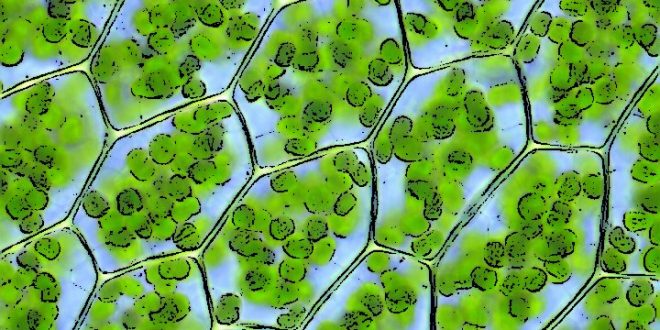Algae is a heterogeneous group of organisms containing members having chlorophyll ‘a’ as their primary photosynthetic pigments. These green chlorophyll molecules along with some accessory pigments are contained generally in a membrane-bound packet-like structure called chloroplast within the algal body. In some members, the chloroplast is absent though; such as the members of Cyanophyceae and Prochlorophyceae because they are prokaryotic. The rest of the algal members contain chloroplast because they are eukaryotic.
Prokaryotes are those whose cells lack membrane-bound organelles. In both pro- and eukaryotes, thylakoid contains pigment which is present in the chloroplast. Though Cyanophyceae or Blue Green Algae don’t contain chloroplast, pigment is present in their thylakoids.
Thylakoids are invascicular (membrane-bound) structure. They consist of a thylakoid membrane surrounding a thylakoid lumen. They are the site of the light-dependent reactions of photosynthesis.
It is assumed that chloroplast is developed by the process of endosymbiosis. One photosynthetic cell entered into a non-photosynthetic organism and later chloroplast is developed.
- A simple type of chloroplast is found in red algae (Rhodophyceae), a primitive class of algae.
- The endosymbiotic theory is also applicable to mitochondrial origin.
- The event occurred about 2.7 billion years ago.
What is the endosymbiotic theory?
Life arose on earth around four billion years ago. Since then, a huge number of organisms have dwelt on this earth of whom many are extinct and some are extant now. This whole array of organisms can be generalized into two groups named prokaryotes and eukaryotes. The eukaryotes are quite complex. They have many intracellular organelles surrounded by membranes which the prokaryotes are deprived of.
- The endosymbiotic theory states that some of the organelles (e.g. mitochondria, chloroplast) in today’s eukaryotic cells were once prokaryotic microbes.
- According to this theory, the first eukaryotes were probably some Protozoans (e.g. amoeba) that were unicellular and took nutrients in the food vacuole through the process of phagocytosis. In one phase of evolutionary history, some of these protozoans ingested some microbes that instead of being digested developed a symbiotic association with the host (the protozoan). In the origin story of chloroplast, that microbe was the photosynthetic bacteria.

- The protozoan provided the cyanobacterium with protection, a stable environment, and mineral nutrients.
- The cyanobacterium produced carbohydrates for the protozoan.
After the association was successful, the evolutionary selection caused the cell wall of the cyanobacterium to be lost or digested by the cellulose digestive enzyme of the protozoan. As a result, two membrane structure is found which resembles the structure of a thylakoid. It contains DNA. And this structure can be assumed the simplest type of chloroplast.
- The food vacuole membrane of protozoan became the outer chloroplast membrane.
- The plasma membrane of cyanobacterium becomes the inner chloroplast membrane.
Evidence for this is based on the following:
- Chloroplasts are the same size as prokaryotic cells, divide by binary fission, and, like bacteria, have Fts (Filamenting temperature sensitive) proteins at their division plane.
- Chloroplasts have their own DNA that is circular, not linear.
- Chloroplasts have their own ribosomes that have the 30S and 50S subunits, unlike eukaryotic cells.
References
Revised by
- Abdul Bari Chowdhury on August 16, 2021.
 Plantlet The Blogging Platform of Department of Botany, University of Dhaka
Plantlet The Blogging Platform of Department of Botany, University of Dhaka






I won’t describe how much I benefited by this article. Especially 5th and 6th para helped me a lot. Thanks.
Good to hear that. Let me know if anything could be adjusted, changed or included here.
Thanks for commenting.
I love this website